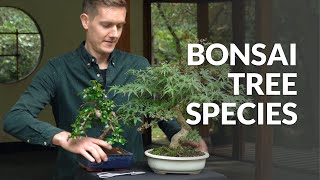Chinese pepper Bonsai Care guidelines
In a warm climate, the Chinese Pepper can be kept outside all the year round. In temperate climate, it can be placed in a wind-sheltered sunny position or in semi-shade from May to September. From autumn until spring the tree needs a warm place with a lot of light with temperatures between 16° C and 23° C / 60° F and 75° F. If the Chinese Pepper is placed in a warm position with enough light during winter, it will keep growing. The temperature should not fall below 10° C / 50° F. If the windows are opened for ventilation in winter, take care that the Chinese Pepper tree is not exposed to cold draught.
The Chinese Pepper needs a lot of water in summer, but it does not tolerate stagnant moisture. If the soil is well-draining, the Chinese Pepper tree must be watered thoroughly as soon as the soil surface becomes dry. In winter it should be watered more cautiously, but if the tree is placed above a heating device, take good care that the rootball does not dry out. Continue reading about watering Bonsai trees.
Watering
Free lecture from the Beginners CourseUse liquid fertilizer every two weeks from spring to autumn and once a month in winter, regarding the dosing instruction. During summer you can also use solid organic fertilizer.
New shoots are cut back leaving two leaves after four leaves have developed. Do not defoliate the Chinese Pepper completely. Wiring is possible throughout the year. Purposeful pruning and the use of guy-wires help to develop the Chinese Pepper's proper tree shape. Continue reading about pruning Bonsai trees.
Repot every second year in spring with root-pruning, older trees every third year. A suitable soil mix is Akadama, pumice and humus in equal parts. Continue reading about repotting Bonsai trees.
The Chinese Pepper tree can be propagated from seeds and cuttings and air-layering is also possible.
If the tree is positioned in the house during winter time or in a greenhouse, spider mites can occur. Scale affects the Chinese Pepper tree less often. For more detailed information on these techniques, check out our Bonsai tree care section.

Chinese pepper bonsai tree

Leaves of the Chinese pepper

Zanthoxylum bonsai

Chinese pepper bonsai tree
General information about the Chinese pepper Bonsai tree
The Chinese Pepper, zanthoxylum or xanthoxylum, which is also called Sichuan Pepper, grows in many parts of Asia and is especially common in the Himalaya, Japan and Korea. It usually grows as a large shrub and can become about 2m (6ft) tall. From the fruits of the Chinese Pepper a hot spice can be made, although it is not related to the real black pepper. It is a dioecious plant with male and female specimen. The small leaves are paripinnate, dark green and glossy. Trunk and branches have thorns which can make wiring a painful experience. The small flowers appear in terminal florescences and have a greenish yellow colour, while the mature fruits are reddish and look like peppercorns. If you need help identifying your tree, take a look at our Bonsai tree identification guide.





